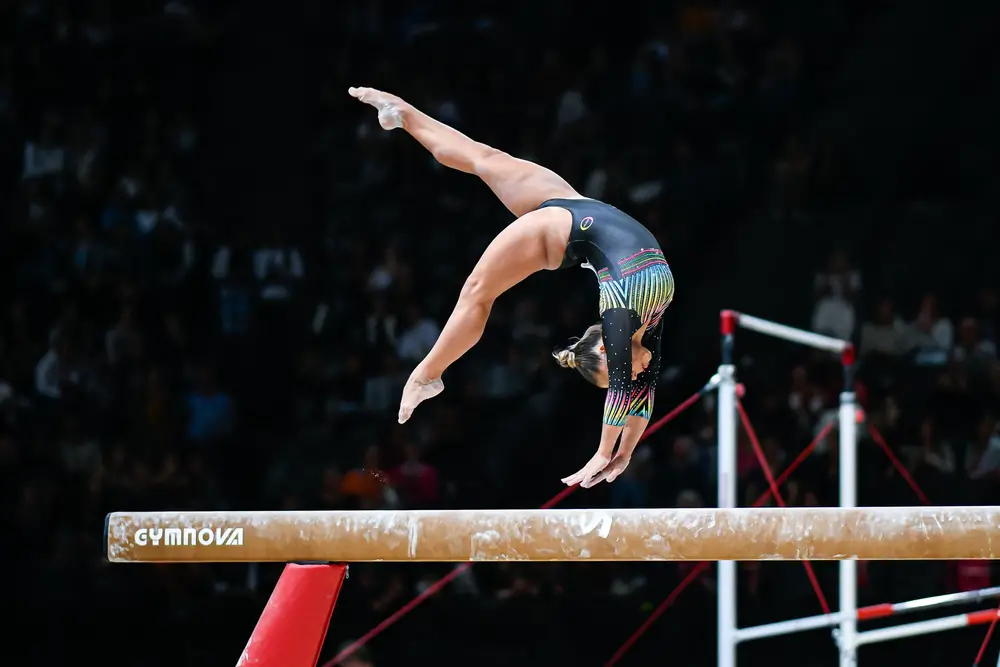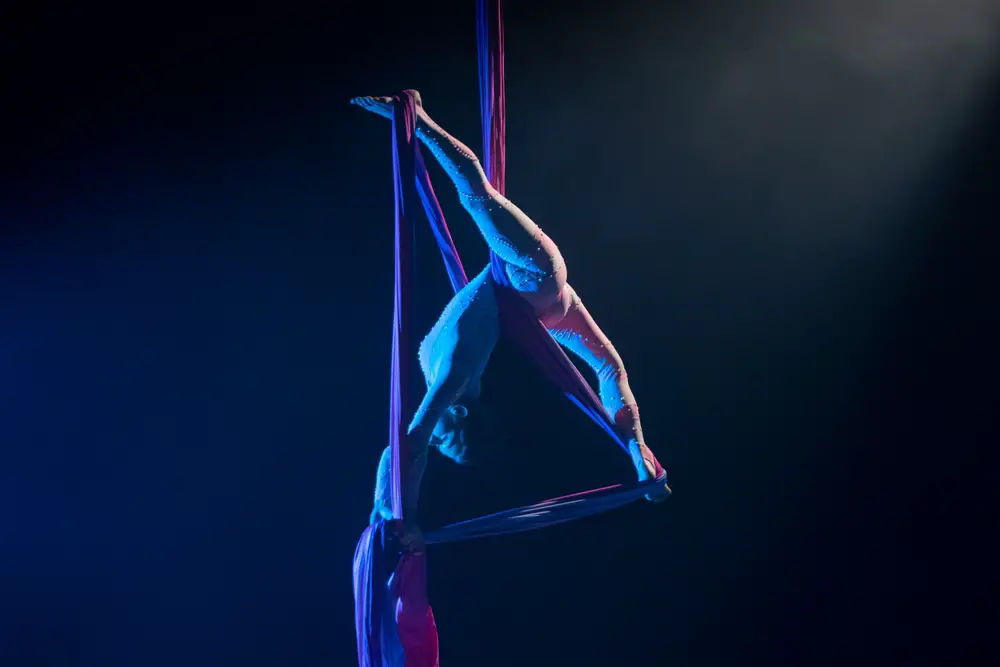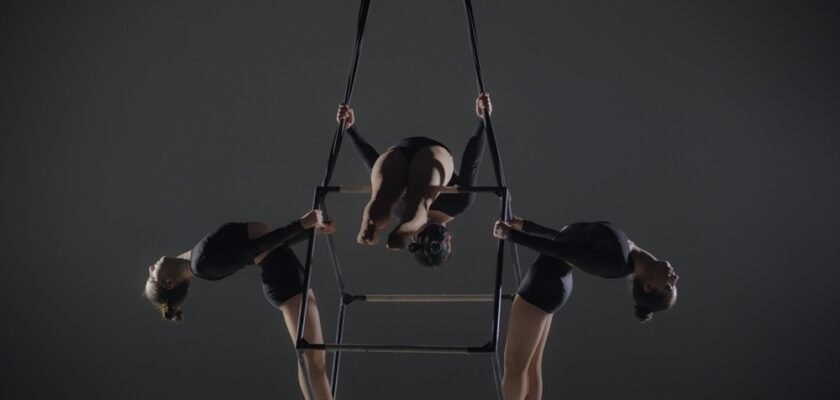Acrobatic gymnastics is a sport that combines strength, flexibility, balance and coordination with acrobatic movements and complex, detailed choreography.
This sport requires the athlete to have a combination of individual and team skills, as they have to perform routines that are impressive both in terms of their degree of difficulty and technical precision.
The rules of acrobatic gymnastics are laid down by the International Gymnastics Federation (FIG) and must be followed to the letter. In this content, then, you’ll learn about these rules, the structure and size of the venue, the duration of the routines, the calculation of the score, the number of participants, as well as infractions, penalties and much more!
So find out about the main rules of acrobatic gymnastics!
Open your Betano account and get up to 1,000 reais in bonuses.
PIX payments, live games and super odds!
Click here to open your account!

Acrobatic gymnastics rules: complete list
- Competition area;
- Duration of the routines;
- Scoring;
- Teams;
- Infractions and penalties;
- Music and choreography;
- Equipment and apparatus;
- Training and preparation;
- Refereeing.
Acrobatic gymnastics rules: competition area
The competition area for acrobatic gymnastics must meet strict specifications, ensuring the safety of the athletes in particular.
This space must measure 12 x 12 meters, with a padded competition surface that can absorb impacts and reduce the risk of injury. It also needs to be non-slip to allow for more precise execution of movements.
In addition, the area around the competition space must be free of obstacles and objects. Adequate lighting is also an essential factor, as it provides clearer visibility for the athletes and judges.
The safety regulations for acrobatic gymnastics require the environment to be constantly monitored and kept in perfect condition throughout the competition.
Acrobatic gymnastics rules: length of routines
The duration of acrobatic gymnastics routines is specific and varies according to the category and type of routine: balance, dynamic, or combined.
Balance and dynamic routines last between 2 minutes and 2 minutes and 30 seconds. The combined routine, which incorporates elements of both, can last up to 3 minutes.
During this time, athletes must demonstrate a continuous sequence of acrobatic and dance movements, maintaining a constant flow without any interruptions.
Punctuality in completing the routine is crucial, as exceeding or failing to reach the time limit results in deductions from the final score.
Acrobatic gymnastics rules: scoring
Scoring in acrobatic gymnastics is divided into three stages: difficulty, execution and artistry. Here’s how it works!
Difficulty
- Difficulty in acrobatic gymnastics is assessed on the basis of the acrobatic elements and transitions performed during the routine.
- Each element then has a specific difficulty value, which is added up to get the total difficulty score.
- More complex and risky moves, such as throws and balance landings, are worth more points.
Execution
- Execution refers to the precision and technical quality with which the movements are performed.
- Judges look at posture, alignment, stability and control during elements and transitions.
- Errors such as balance faults, falls and poor posture result in deductions from the final score.
Artistic
- The artistic score is the one that evaluates the choreography, creativity and synchronization of the routine.
- This includes the fluidity of the movements, the originality of the acrobatic combinations and the musical interpretation.
- Interaction between team members is also crucial for a high score.
The final score is the sum of the difficulty, execution and artistic points, minus any deductions for technical or time infractions!
Acrobatic gymnastics rules: teams
In acrobatic gymnastics, competitions can involve different team formations. See what they are:
- Pair: a pair consists of two gymnasts, who can be of the same or opposite sex. Pair routines should show coordination and partnership, with elements such as throws, acrobatics and handstands.
Trio: a trio is made up of three gymnasts, usually of the same sex. Trio routines highlight the complexity of human pyramids and synchronization.
Group: Groups consist of four gymnasts of the same sex. These group routines are the most complex, with elaborate formations, multiple throws and dynamic handstands.
Each team formation in acrobatic gymnastics has its own requirements and challenges, and the routines are adapted to make the most of the participants’ abilities!
Acrobatic gymnastics rules: infractions and penalties
Infractions and penalties are strictly monitored in acrobatic gymnastics, thus ensuring a fair and safe competition. The most common penalties are:
- Technical errors: falls, imbalances and failures to execute elements result in point deductions. The severity of the deduction will depend on the seriousness of the error and the impact on the presentation.
- Time infractions: exceeding or failing to meet the routine time limit leads to automatic deductions. The accuracy of the stopwatch is essential, and any deviation is penalized.
- Clothing and props: <Inappropriate clothing or the use of prohibited props will result in deductions.
- Failure to respect safety rules: any violation of safety rules, such as performing prohibited or risky elements without proper preparation, leads to severe penalties.
Music and choreography
The choice of music is very important in acrobatic gymnastics, as it must complement the movements and be appropriate for the age category of the gymnasts.
The choreography needs to be very creative and well synchronized with the music, thus contributing to the artistic score.
Equipment and apparatus
The equipment used in the sport, such as mats and support accessories, must comply with FIG regulations.
The use of unapproved equipment results in penalties, and quality is essential for the safety and performance of athletes.
Training and preparation
Rigorous training and preparation are fundamental to athletes’ success in acrobatic gymnastics. Gymnasts need to be in excellent physical and mental condition, with regular training that includes strengthening, flexibility and practicing acrobatic elements.
Refereeing
Acrobatic gymnastics judges are highly qualified and trained to evaluate every aspect of the routines.
They must also follow a very strict code of ethics, ensuring impartiality and accuracy in scoring.
Judging is based on the rules established by the FIG, and the results are audited to ensure the integrity of the competitions!

Acrobatic gymnastics rules: complete list
- Competition area;
- Duration of the routines;
- Scoring;
- Teams;
- Infractions and penalties;
- Music and choreography;
- Equipment and apparatus;
- Training and preparation;
- Refereeing.
Those were the rules of acrobatic gymnastics. If you liked this article, keep exploring our other content on this and many other sports, and don’t forget to leave your comments!



